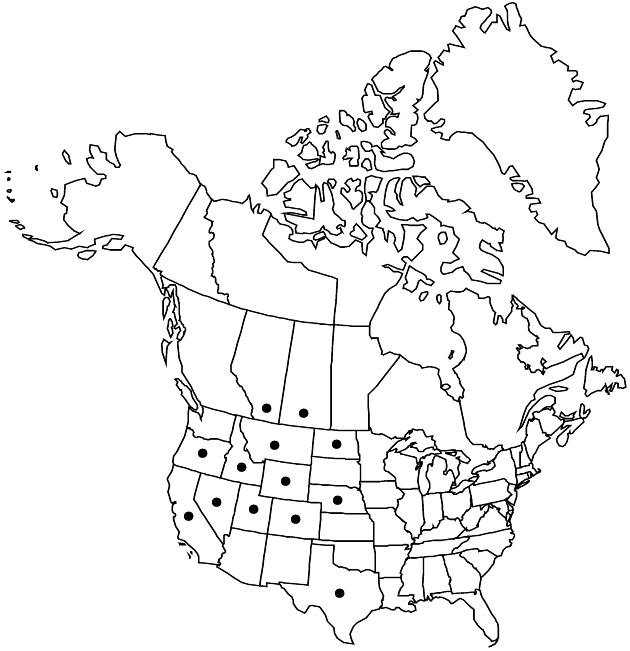Difference between revisions of "Pyrrocoma lanceolata"
Erythea 2: 69. 1894.
FNA>Volume Importer |
imported>Volume Importer |
||
| Line 8: | Line 8: | ||
}} | }} | ||
|common_names=Lance-leaf goldenweed | |common_names=Lance-leaf goldenweed | ||
| + | |special_status={{Treatment/ID/Special_status | ||
| + | |code=F | ||
| + | |label=Illustrated | ||
| + | }}{{Treatment/ID/Special_status | ||
| + | |code=E | ||
| + | |label=Endemic | ||
| + | }} | ||
|basionyms={{Treatment/ID/Basionym | |basionyms={{Treatment/ID/Basionym | ||
|name=Donia lanceolata | |name=Donia lanceolata | ||
| Line 30: | Line 37: | ||
-->{{Treatment/Body | -->{{Treatment/Body | ||
| − | |distribution= | + | |distribution=Alta.;Sask.;Calif.;Colo.;Idaho;Mont.;N.Dak.;Nebr.;Nev.;Oreg.;Tex.;Utah;Wyo. |
|discussion=<p>Varieties 2 (2 in the flora).</p><!-- | |discussion=<p>Varieties 2 (2 in the flora).</p><!-- | ||
--><p><i>Pyrrocoma lanceolata</i> has the widest range of any species and exhibits much variability in habit and head size. A number of infraspecific taxa have been recognized in the past; only two were retained by R. A. Mayes (1976).</p> | --><p><i>Pyrrocoma lanceolata</i> has the widest range of any species and exhibits much variability in habit and head size. A number of infraspecific taxa have been recognized in the past; only two were retained by R. A. Mayes (1976).</p> | ||
| Line 61: | Line 68: | ||
|basionyms=Donia lanceolata | |basionyms=Donia lanceolata | ||
|family=Asteraceae | |family=Asteraceae | ||
| − | |distribution= | + | |distribution=Alta.;Sask.;Calif.;Colo.;Idaho;Mont.;N.Dak.;Nebr.;Nev.;Oreg.;Tex.;Utah;Wyo. |
|reference=None | |reference=None | ||
|publication title=Erythea | |publication title=Erythea | ||
|publication year=1894 | |publication year=1894 | ||
| − | |special status= | + | |special status=Illustrated;Endemic |
| − | |source xml=https:// | + | |source xml=https://bibilujan@bitbucket.org/aafc-mbb/fna-data-curation.git/src/bb6b7e3a7de7d3b7888a1ad48c7fd8f5c722d8d6/coarse_grained_fna_xml/V19-20-21/V20_964.xml |
|tribe=Asteraceae tribe Astereae | |tribe=Asteraceae tribe Astereae | ||
|genus=Pyrrocoma | |genus=Pyrrocoma | ||
Revision as of 20:53, 27 May 2020
Plants 20–50 cm. Stems 1–10, decumbent to ascending or erect, red-tinged, sometimes branched, sparsely leafy, ± tomentulose or glabrous, sometimes stipitate-glandular. Leaves: basal blades lanceolate or rarely oblanceolate to narrowly elliptic, 50–300 × 8–30 mm, margins sharply dentate, eciliate, apices acute, spinulose; cauline sessile, lanceolate, bases clasping; faces ± tomentulose to glabrate or glabrous, sometimes stipitate-glandular. Heads (1–)4–20(–50) in corymbiform or paniculiform arrays. Peduncles 0–6 cm. Involucres hemispheric, 7–10 × 10–18 mm. Phyllaries in 3–4 series, linear-lanceolate to lanceolate, 3–11 mm, unequal, bases white-chartaceous, margins entire, eciliate, apices conspicuously green, faces glabrous or tomentulose, rarely stipitate-glandular. Ray florets 18–45; corollas 6–11 mm. Disc florets 20–100; corollas 5–7 mm. Cypselae oblong, 3.5–4.5 mm, 4-angled, faces striate, sericeous; pappi tawny, 5–7 mm.
Distribution

Alta., Sask., Calif., Colo., Idaho, Mont., N.Dak., Nebr., Nev., Oreg., Tex., Utah, Wyo.
Discussion
Varieties 2 (2 in the flora).
Pyrrocoma lanceolata has the widest range of any species and exhibits much variability in habit and head size. A number of infraspecific taxa have been recognized in the past; only two were retained by R. A. Mayes (1976).
Selected References
None.
Key
| 1 | Stems glabrous or sparsely tomentulose, eglandular | Pyrrocoma lanceolata var. lanceolata |
| 1 | Stems tomentulose, densely stipitate-glandular, especially peduncles | Pyrrocoma lanceolata var. subviscosa |